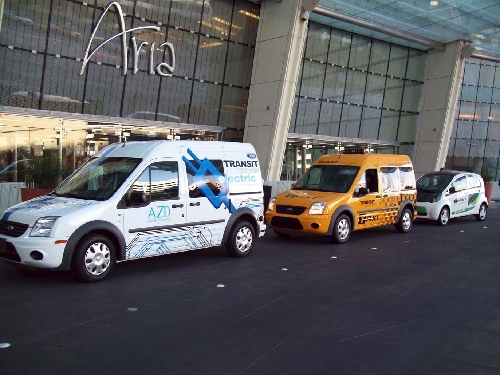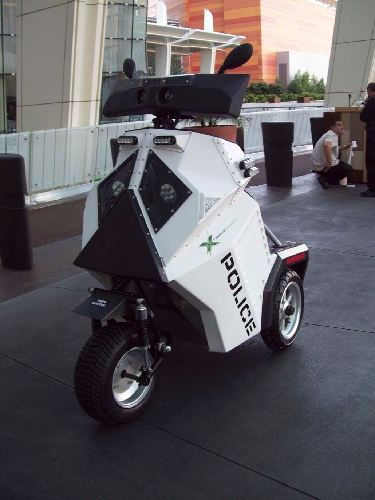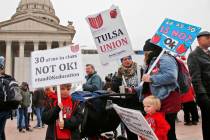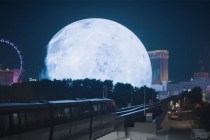Clean-energy vehicles showcased
During the last four years, Sen. Harry Reid, D-Nev., has joined with Jon Podesta, former chief of staff under President Bill Clinton's administration, to organize a National Clean Energy Summit each summer in Las Vegas.
Sen. Reid has often described Nevada as "the Saudi Arabia of renewable energy" because of the state's abundant resources of sun, wind and underground hot springs that can potentially be converted into electric power. For 75 years, Hoover Dam has housed powerful generators that convert the flowing energy of the Colorado River into more than 2 billion watts of clean, renewable hydroelectric power every day. This abundant supply of electricity meets the needs of 1.5 million homes. However, much of that energy is exported to neighboring states.
By contrast, Nevada imports about 99 percent of the oil, diesel fuel and gasoline its residents use for transportation every day.
This year, National Clean Energy Summit 4.0: The Future of Energy began Aug. 29 at Aria in CityCenter on the Strip. An Alternative Fuel Vehicle Showcase highlighted clean-energy vehicles that were powered by electricity, fuel cells and natural gas.
The electric-car industry exhibited multiple production vehicles this year, including a Nissan Leaf, Chevy Volt, Mitsubishi i-MiEV, a Ford Transit Connect compact van conversion from Azure Dynamics, a CODA electric sedan, and two utility vehicles from Xtreme Green Products Inc.
Entrepreneurs Neil and Claire Roth have been building their Xtreme Green electric vehicles in North Las Vegas for several years. Their company specializes in rugged utility terrain vehicles for off-road use by security and maintenance personnel. They have also designed a single-person police mobility vehicle with flashing emergency lights that attracted a lot of attention during the showcase.
A second Ford Transit Connect compact van at the exhibit had been converted to run on a tank of compressed natural gas, a fossil fuel that is found much more abundantly within U.S. borders than crude oil. Natural methane gas can be compressed to 3,600 pounds per square inch into a holding tank in the rear compartment of the van. The fuel can substitute for gasoline in the vehicle's internal combustion engine, while also burning more cleanly and providing a range of 330 miles between fill-ups.
Toyota displayed a prototype fuel cell hybrid vehicle that runs on hydrogen gas stored in a high-pressure tank. While driving, the hydrogen is mixed with ambient oxygen pulled out of the air by a compressor. The two sets of atoms are catalyzed inside the fuel cell to create electricity while also emitting H2O as water vapor from its exhaust pipe. The electricity from the fuel cell can directly drive the electric motor on the Toyota FCHV, while also recharging a battery pack that can add extra electric boost power to the same motor during periods of acceleration. Toyota representatives affirmed that the company plans to bring this vehicle into production during 2015.
MGM Resorts International, under President and CEO Jim Murren, has been busy implementing clean-energy applications at the Aria and other parts of the CityCenter complex, qualifying the site to achieve six Gold rating awards under the Leadership in Energy and Environmental Design program of the U.S. Green Building Council.
The company recently installed two electric car public charging stations within the valet parking facility at the entrance to The Shoppes at Mandalay Place, located between Mandalay Bay and the Luxor pyramid. The MGM CityCenter limousine fleet also runs on compressed natural gas rather than gasoline.
On day two of the Clean Energy Summit 4.0, U.S. Vice President Joe Biden emphasized the need to continue seeding technology development programs in the clean-energy sector, especially during difficult times of turmoil and economic uncertainty. Otherwise, the U.S. could lose its technology leadership to China and Germany, two countries that are already pulling ahead in exporting renewable energy technologies to the rest of the world.
Nevada Gov. Brian Sandoval participated in a panel that included California Gov. Jerry Brown and Washington Gov. Christine Gregoire.
During the recent 2011 Nevada legislative session, Assembly Bill 511 was successfully passed into law and signed by Gov. Sandoval in June. The new law includes guidelines for the state department of motor vehicles to develop alternative-fuel vehicle infrastructure. It also authorizes the DMV to create rules for autonomous vehicles to travel on designated highways. Nevada is the first state in the nation to allow driverless vehicles on public roads.
California Gov. Brown emphasized that his state is pushing hard to promote clean-energy resources, startup businesses and alternative-fuel transportation. Recent legislation during spring 2011 expanded a mandate for California utilities to purchase renewable-energy resources for the state's electrical grid, increasing the existing goal of 20 percent by 2020 to now achieve 33 percent by the same year, while continuing to serve a growing population of 39 million residents. California is also once again pushing zero-emission vehicle mandates within the state to encourage the development of a clean-energy automotive industry there.
Washington and Oregon have encouraged early adoption of electric vehicles and recharging infrastructure within their states. An "international green corridor" has been initiated along the West Coast on Interstate Highway 5 that will build out a network of electric-vehicle recharging stations from Vancouver, British Columbia, through Washington, Oregon, California and into Mexico.
U.S. Navy Secretary Ray Mabus and Dr. Dorothy Robyn of the Department of Defense both emphasized the military benefits of using alternative-fuel vehicles for transportation, with a low detection footprint, to give strategic advantage to U.S. forces in the field.
According to the Navy Secretary, "For every 50 convoys in Afghanistan, we have lost one Marine."
Mabus has set a goal for the Navy to derive half of its fuel from nonfossil sources by 2020. Domestic military bases can also benefit by retrofitting existing buildings to make them more efficient and adopt alternative-fuel fleet vehicles that are powered by independent renewable-energy power sources.
Robyn noted that this effort by the Department of Defense to provide a huge military market for energy-efficient technologies and alternative-fuel vehicles can also help these industries grow within the private sector in order to eventually bring down costs to the general public.
For more information about the National Clean Energy Summit 4.0, visit the organization's website at www.cleanenergysummit.org.
To read the text of Nevada Assembly Bill 511 that became state law last June, visit www.leg.state.nv.us/Session/76th2011/Bills/AB/AB511.pdf.
Stan Hanel has worked in the electronics industry for more than 30 years and is a long-time member of the Electric Auto Association and the Las Vegas Electric Vehicle Association. Hanel writes and edits for EAA's "Current Events" and LVEVA's "Watts Happening" newsletters. Contact him at stanhanel@aol.com.















